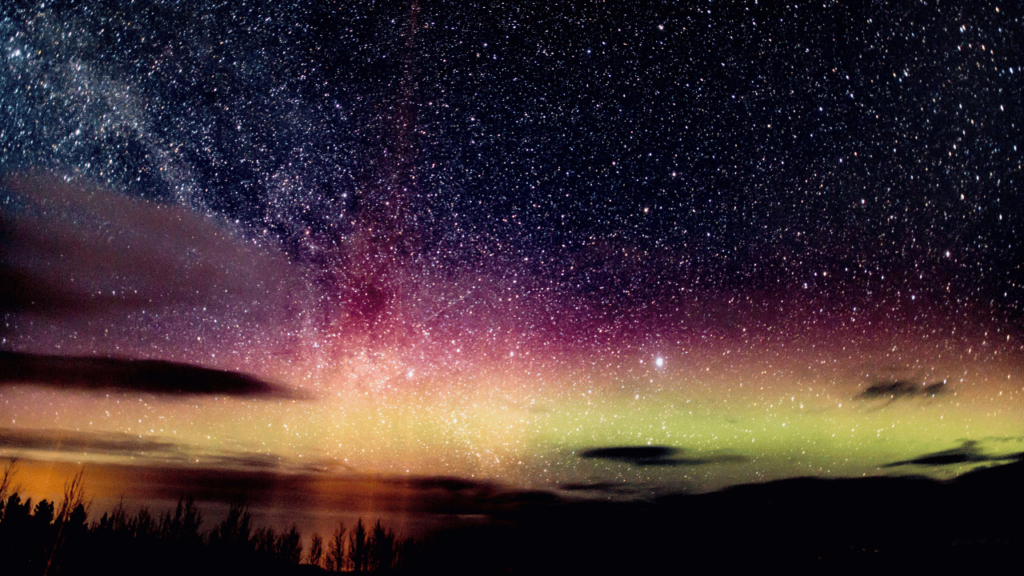Aurora: Illuminating the Beauty of the Northern Lights in 2023
Aurora
Aurora: Illuminating the Beauty of the Northern Lights in 2023. The aurora is created when charged particles from the sun collide with atoms in the Earth’s atmosphere. These particles excite the atoms, causing them to release energy in the form of light. This light creates colorful displays in the sky, like curtains or waves of light.

What are the other names of Aurora?
The aurora is also known by different names in various cultures. In the Northern Hemisphere, it is often called the “aurora borealis,” while in the Southern Hemisphere, it is referred to as the “aurora australis.” These names are derived from Latin, with “Borealis” meaning “northern” and “australis” meaning “southern.”
What causes the aurora?
The aurora is caused by charged particles from the sun colliding with atoms in the Earth’s atmosphere. When these particles interact with the atoms, they release energy in the form of light, creating the beautiful aurora displayed in the sky.
Auroras occur when the Earth’s magnetic field interacts with charged particles from the sun. These particles, mainly electrons and protons, are carried by the solar wind and are funneled towards the Earth’s poles. As they approach the Earth, the magnetic field guides them towards the polar regions.
When the charged particles enter the Earth’s atmosphere, they collide with atoms and molecules, primarily oxygen and nitrogen.

As a result of these collisions, atoms and molecules become energized, leading to the emission of light energy. The colors of the aurora depend on the type of gas and altitude at which the collisions occur.
Oxygen molecules at lower altitudes produce green and red auroras, while at higher altitudes can create rare blue and purple hues. Nitrogen molecules typically produce blue and red auroras.
The shape and movement of the aurora are influenced by factors such as the strength of the solar wind, the Earth’s magnetic field, and atmospheric conditions. The result is a stunning display of shimmering curtains, arcs, and waves of light dancing across the sky.
Where is Aurora observed mostly?
Auroras are most commonly observed in the polar regions, near the North and South Poles. In the Northern Hemisphere, they’re called the aurora borealis or the northern lights, while in the Southern Hemisphere, they’re known as the aurora australis or the southern lights.
Is aurora caused by to magnetic field of the earth?
Yes, the aurora is indeed caused by the magnetic field of the Earth. The Earth’s magnetic field plays a crucial role in guiding the charged particles from the sun towards the polar regions, where they interact with the atmosphere and create stunning aurora displays. It’s like a magical dance between the particles and our planet’s magnetic field.
Why does Aroura show different colors?
The colors of the aurora depend on the type of gas and altitude at which the collisions occur. Oxygen molecules at lower altitudes produce green and red auroras, while at higher altitudes can create rare blue and purple hues. Nitrogen molecules typically produce blue and red auroras. It’s like nature’s own colorful light show in the sky.
Does aurora occur all year?
No, auroras do not occur all year round. They are more commonly seen during the winter months in the polar regions when the nights are longer and darker. This is because the darkness allows us to see the beautiful display of the aurora more easily. However, auroras can be observed at any time of the year if the conditions are right and there is enough solar activity. It’s always a special treat when we get to witness the dancing lights of the aurora.


Is it safe to see Aurora?
Yes, it is safe to see the aurora. Many people travel to the polar regions specifically to witness this breathtaking natural phenomenon. Just make sure to dress warmly and find a clear, dark location away from city lights for the best viewing experience. Delight in the enchanting spectacle of the aurora.
Is Aurora is real phenomenon?
The aurora is indeed a real phenomenon. It’s a natural light display that occurs in the polar regions when charged particles from the sun collide with atoms in the Earth’s atmosphere. This collision creates mesmerizing colors and patterns that we call the aurora borealis (in the Northern Hemisphere) and the aurora australis (in the Southern Hemisphere). It’s like a magical show put on by nature itself.
Can we take a picture and make videos of Aurora?
Absolutely, You can take pictures and make videos of the aurora. It’s a fantastic opportunity to capture the beauty of this natural phenomenon and share it with others. Just make sure you have a good camera or smartphone with you and find a spot with minimal light pollution for the best results. Get ready to capture some stunning footage of the aurora
Which color aurora shows the most?
Green and pink are the prevailing hues of the aurora. The green color is caused by oxygen molecules in the atmosphere, while the pink color is due to a combination of oxygen and nitrogen. However, the colors can vary depending on the altitude and the type of particles involved in the collision. So, while green and pink are the most common, you might also see shades of red, yellow, blue, and even purple in the aurora. It’s like a vibrant and ever-changing light show in the sky